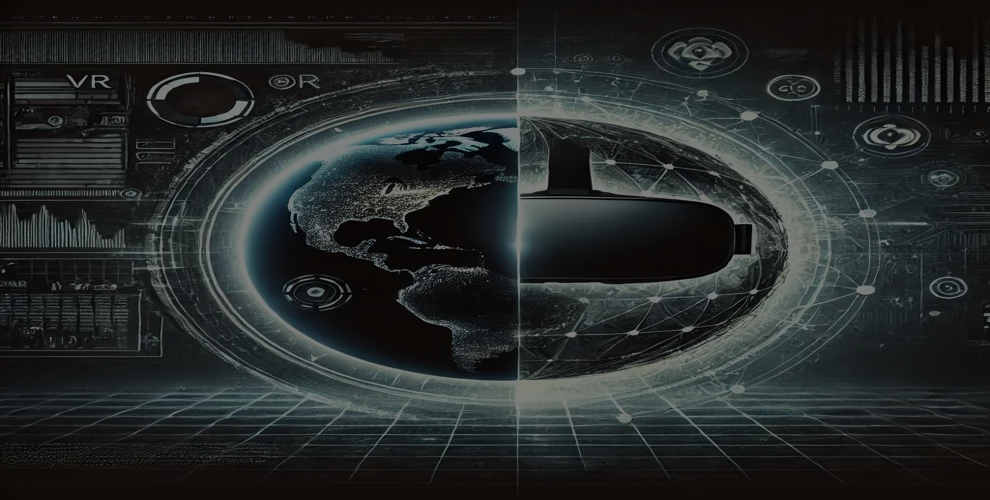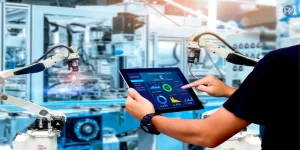
4 Ways VR and AR are Changing the World
Table of Contents
Introduction
Welcome to WikiGlitz!
We’re excited to bring you this amazing blog on How VR and AR are Changing the World.
Virtual Reality (VR) and Augmented Reality (AR) have rapidly evolved from futuristic concepts into transformative technologies that are reshaping various industries.
From business and education to healthcare and entertainment, VR and AR are making a significant impact on how we live, work, and play.
This blog will explore four key ways these technologies are revolutionizing the world.
Key Takeaways:
- VR and AR are enhancing customer experiences, product development, and workplace efficiency in businesses.
- These technologies are revolutionizing education by offering immersive learning experiences.
- In healthcare, VR and AR are improving medical training, patient treatment, and the overall quality of care.
VR and AR in Business
Transforming Customer Experience
VR and AR are at the forefront of transforming customer experiences. According to a report by PwC, immersive technologies like VR and AR can significantly enhance customer engagement by creating personalized and interactive experiences.
For example, AR applications allow customers to visualize products in their environment before purchasing, increasing confidence and reducing returns.
One notable case is the AR app developed by Sephora, which lets customers try on makeup virtually, resulting in a significant boost in online sales.
Enhancing Product Development and Prototyping
In product development, VR and AR are proving invaluable. A study by Capgemini revealed that 82% of companies currently implementing AR and VR say the benefits are either meeting or exceeding their expectations.
These technologies enable designers and engineers to create and test virtual prototypes, reducing the time and cost associated with physical prototyping.
Ford Motor Company, for instance, uses VR to conduct virtual crash tests, allowing engineers to identify potential issues and make design changes before physical prototypes are built.
How VR and AR are Changing the Workplace
The workplace is also being transformed by VR and AR. A study published by Deloitte highlights how VR is being used for employee training, particularly in industries where safety is paramount.
For example, Walmart uses VR simulations to train employees on how to handle situations like Black Friday rushes, improving preparedness and reducing workplace accidents.
AR is also gaining traction in on-the-job training, with companies like General Electric using AR to provide real-time, step-by-step guidance to workers, enhancing productivity and reducing errors.
Real-World Examples of VR and AR in Business
Real-world applications of VR and AR in business are expanding rapidly. For instance, L’Oréal’s AR app, Makeup Genius, has been downloaded millions of times, allowing users to try on different looks virtually.
DHL, a global logistics company, uses AR glasses to optimize its warehouse operations, resulting in a 15% increase in efficiency. These examples underscore how VR and AR are not just changing business processes but also driving tangible results in productivity and customer satisfaction.
VR and AR in Education
VR and AR in Modern Education
VR and AR are revolutionizing the educational landscape by making learning more immersive and interactive.
According to research by the National Institute of Health, students who engage with VR content demonstrate higher retention rates compared to traditional learning methods.
This is because VR and AR create a multisensory experience that enhances understanding and memory retention.
How VR and AR are Used Today in Classrooms
Today, VR and AR are increasingly used in classrooms to provide students with experiences that would otherwise be impossible.
For example, Google Expeditions allows students to take virtual field trips to explore historical sites, outer space, and even the human body in 3D.
A study by the Stanford Graduate School of Education found that VR-based learning can improve students’ engagement and motivation, particularly in subjects like science and history.
Benefits of VR and AR in Learning
The benefits of VR and AR in education extend beyond engagement. A report by EdTechXGlobal highlights how these technologies cater to diverse learning styles, making education more inclusive.
For instance, VR can be particularly beneficial for students with learning disabilities, providing them with alternative ways to grasp complex concepts.
Additionally, AR can enhance collaboration by allowing students to work together in a shared virtual space, facilitating teamwork and problem-solving.
Future of VR and AR in Education
Looking ahead, VR and AR are expected to play an even more significant role in education. Experts predict that as these technologies become more affordable and accessible, they will be integrated into mainstream education.
A study by Goldman Sachs estimates that the market for VR and AR in education could reach $700 million by 2025.
This growth will likely lead to more personalized and adaptive learning experiences, where students can learn at their own pace in an environment tailored to their needs.
VR and AR in Healthcare
Impact of VR and AR on Society’s Health Sector
The healthcare sector is experiencing profound changes due to the integration of VR and AR technologies.
According to a study published in the Journal of Medical Internet Research, VR is being used to enhance patient experiences, particularly in managing chronic pain and anxiety.
The immersive nature of VR allows patients to escape their immediate surroundings, which can be particularly beneficial in reducing the perception of pain and improving overall well-being.
Advancements in VR and AR for Medical Training
VR and AR are also revolutionizing medical training by providing immersive, hands-on experiences without the risks associated with live patients.
A report by Harvard Business Review highlights that VR training can reduce the time required to train surgeons by up to 30%.
In addition, a study conducted by Cedars-Sinai Medical Center found that VR-based simulations help medical students and professionals retain more information compared to traditional training methods.
This is crucial in fields like surgery, where precision and practice are key to patient outcomes.
VR and AR Applications in Patient Treatment
VR and AR are increasingly being used in patient treatment, offering new ways to diagnose and manage conditions.
For example, VR is being utilized in exposure therapy for patients with PTSD, allowing them to confront and manage their fears in a controlled environment.
A study from the American Journal of Psychiatry showed that VR-based exposure therapy significantly reduced PTSD symptoms in veterans.
Meanwhile, AR is being used in surgeries to overlay crucial information, such as a patient’s anatomy, directly onto the surgeon’s field of view, improving precision and outcomes.
The Role of VR and AR in the Future of Healthcare
The future of VR and AR in healthcare is promising, with experts predicting even more advanced applications.
A report by the consulting firm Accenture suggests that VR and AR could save the global healthcare industry up to $7 billion annually by improving efficiency in procedures, training, and patient care.
The integration of these technologies into everyday healthcare practices is expected to lead to more personalized and effective treatments, from remote surgeries conducted via VR to AR-enhanced diagnostics that provide real-time data and insights.
VR and AR in Entertainment
How the Entertainment Industry is Changing with VR and AR
The entertainment industry is one of the most visible arenas where VR and AR are making an impact.
According to a report by Deloitte, the global AR and VR market in the entertainment sector is projected to reach $35 billion by 2025.
These technologies are redefining how audiences interact with content, offering immersive experiences that were previously unimaginable.
For instance, VR concerts allow fans to experience live performances from the comfort of their homes, creating new revenue streams for artists and new experiences for audiences.
Innovations in Gaming with Virtual and Augmented Reality
Gaming remains a leading domain for VR and AR innovation. A study by Newzoo revealed that VR gaming revenue is expected to surpass $5 billion by 2023.
Games like Beat Saber and Half-Life: Alyx have shown the potential of VR to offer deeply immersive experiences that blur the line between reality and the virtual world.
AR gaming is also thriving, with Pokémon GO being a prime example. The game, which overlays digital creatures onto the real world, has been downloaded over a billion times and generated over $3 billion in revenue, demonstrating the massive potential of AR in entertainment.
VR and AR in Everyday Life: From Movies to Social Media
Beyond gaming, VR and AR are making their way into movies and social media, creating new ways to experience content.
According to research by PwC, VR cinema is gaining traction, allowing viewers to watch films in a fully immersive environment. This new form of storytelling enables filmmakers to engage audiences on a deeper level, making them feel as if they are part of the story.
On social media, platforms like Snapchat and Instagram are leveraging AR filters to enhance user interaction, blending virtual elements with real-world environments.
This trend is not only engaging users but also providing brands with innovative ways to reach their audiences.
Real-World Examples of VR and AR in Entertainment
The entertainment industry is rich with examples of how VR and AR are being used to create new experiences.
For instance, the VR concert platform Wave has hosted virtual performances by artists like John Legend and The Weeknd, attracting millions of viewers worldwide.
Similarly, AR is being used in live sports broadcasts, with ESPN utilizing AR to display real-time stats and graphics during games, enhancing the viewing experience.
These examples highlight how VR and AR are not just changing how we consume entertainment but also how it is produced and delivered.
Conclusion
How VR and AR are Changing the World: A Glimpse into the Future
In conclusion, VR and AR are not just technological novelties—they are transformative tools that are reshaping the world as we know it.
From revolutionizing business practices and enhancing education to improving healthcare outcomes and redefining entertainment, these technologies are set to play an even more significant role in our future.
As we continue to explore and expand the potential of VR and AR, the possibilities for innovation are limitless.
Thank you for reading this blog on WikiGlitz. Follow WikiGlitz for more insights into the future of technology and how it is changing our world!
FAQs
What are the most significant benefits of VR and AR in business?
VR and AR in business offer enhanced customer experiences, more efficient product development, and improved workplace training. These technologies help companies engage customers, reduce prototyping costs, and train employees in immersive environments.
How are VR and AR being used in modern education?
VR and AR are used in education to create immersive learning experiences, such as virtual field trips and interactive 3D models, making complex concepts easier to understand and retain.
Can VR and AR really transform the healthcare industry?
Yes, VR and AR are transforming healthcare by improving medical training, enhancing patient treatment, and enabling more precise surgeries. These technologies are also being used for therapy and pain management.
What are some real-world examples of VR and AR in entertainment?
Examples include VR concerts by artists like John Legend, AR gaming with Pokémon GO, and the use of AR in live sports broadcasts to display real-time stats and graphics.
What does the future hold for VR and AR technology?
The future of VR and AR is bright, with expected advancements in personalized education, remote healthcare, and immersive entertainment experiences. These technologies will continue to evolve, offering new opportunities across various industries.
Want to keep up with our blog?
Our most valuable tips right inside your inbox, once per month.
Error: Contact form not found.
WikiGlitz Team
Welcome to WikiGlitz, your ultimate destination for tech insights and innovation. Our expert team is dedicated to delivering free resources and professional advice on various technology topics, including Artificial Intelligence, Cyber Security, Cloud Computing, and more. We strive to empower our readers with up-to-date information and practical guidance, ensuring you stay ahead in the rapidly evolving tech landscape. At WikiGlitz, we are passionate about making complex technology accessible to everyone. Our team of seasoned experts curates content that is both informative and engaging, helping you understand and leverage the latest tech trends. Whether you're a tech enthusiast or a professional, WikiGlitz is your go-to source for reliable, expert-driven content. Join us on this journey to explore and embrace the future of technology.





